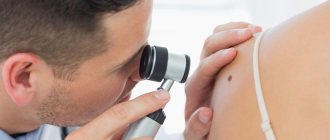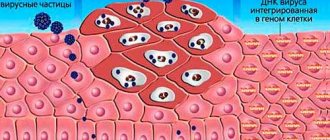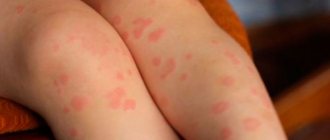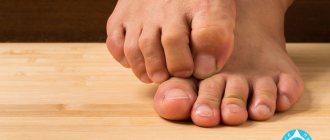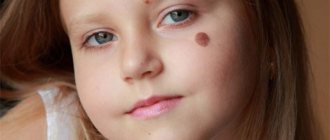A rash is a change in the color and texture of the skin in the form of nodules, blisters, spots, and peeling. The skin of babies and older children is very sensitive to external environmental conditions and general health. Foot rashes in children are caused by allergies, infections, care errors, and autoimmune disorders. It may not bother you or may be accompanied by severe itching and pain. To combat it, it is important for parents and a doctor to find out the cause.
Allergic reactions
Allergic rashes on the feet of a child are caused by various factors. Depending on the type of irritant and the method of contact with it, they appear only in certain areas or throughout the body.
What causes allergies on the feet?
- Medicines. Hypersensitivity reactions are caused by both active and excipients in the drug. Most often it is provoked by antibiotics, sweet syrups, solutions, and lollipops. Within 2–3 hours after taking the product, a red rash, swelling, and itching appear on the child’s body and feet;
- Poisonous plants (poison oak, ivy, sumac). When contacting them on the child’s feet, blisters, a rash in the form of spots or pimples, and swelling form. In this case, you need to thoroughly wash your skin with soap and water and wash your clothes. To prevent future exposure to poisonous plants, teach your children what they look like. When walking, avoid places where they grow;
- Insect bites (bees, wasps, mosquitoes, ticks, fleas). In addition to itching, red rashes on the feet and legs of a child from insect bites, severe reactions are possible - anaphylactic shock and Quincke's edema. These conditions are life-threatening and require emergency care. To prevent bites, stay away from areas where insects congregate. Make sure your child does not run on the grass barefoot or in sandals with bare feet. In the summer, before going outside, apply protective creams or aerosols to exposed areas of your baby’s skin;
- Physical factors. Allergies can be caused by cold, heat, sun rays, pressure, compression. In this case, when freezing or overheating, the child develops a hives-like rash on the palms or soles, which turns pale when pressed. If you notice this reaction, take steps to prevent it from happening in the future;
- Cosmetics for skin care. If a cream or soap contains synthetic fragrances and dyes, then there is always a risk of allergies. Choose products with natural ingredients and no fragrances. Test the effect of a new product on your skin on a small area first.
A tendency to allergic reactions can trigger eczema. This is a chronic disease with a hereditary predisposition. Very often it occurs in childhood. There are several types of eczema. One of them is dyshidrotic. Appears on the palms, soles, sides of the feet, and toes. The elements of the rash look like clusters of fluid-filled blisters up to 5 mm in size, accompanied by itching. After the bubbles open, erosions and crusts form.
If an allergy is detected, you need to be careful with irritants and, if possible, avoid contact with them. As first aid, give your child an age-appropriate antihistamine. Then be sure to contact your doctor to find out what to do next.
Diagnostics
In order to prescribe adequate treatment, it is necessary to establish the correct diagnosis and, if possible, find out the cause of the allergy. For this purpose, the following studies are prescribed:
- Laboratory:
- general clinical
- a general blood test reveals signs of inflammation; - biochemical
– metabolic disorders and signs of inflammation are detected (high levels of C-reactive protein); - immunological
– detection of antibodies to certain allergens, including those of infectious origin; They also determine the presence of rheumatoid factor – autoantibodies to the body’s own tissues; - microbiological
– inoculation of biological media (blood, joint fluid) on nutrient media in order to detect infection and its sensitivity to antibiotics. - Instrumental studies of joints:
- Ultrasound
– reveals signs of inflammation; - radiography
- possible changes in bone structures; - arthroscopy
– performed according to indications; this is an examination of the inner surface of the joint with the possible collection of synovial fluid for examination; helps to distinguish an infectious process from a toxic-allergic one.
It is impossible to diagnose and properly treat allergic arthritis at home. This can only be done in a clinic equipped with modern equipment.
Infections
Infections that cause a rash on a child's feet include diseases caused by viruses, fungi, and parasites. They can affect only the feet or be systemic, spreading to the entire skin. The shape of the rash elements, their number, localization, nature, and speed of appearance are important diagnostic criteria.
Viral infections
With many viral diseases, in addition to a rash on the body and feet, the child has fever, weakness, loss of appetite, sore throat, and runny nose. Moreover, high fever is often the first symptom of infection, which appears several days before the rash. This development is typical for chickenpox, measles, rubella, roseola, and hand-foot-mouth disease (Coxsackie virus), which are easily transmitted by airborne droplets. These conditions resolve on their own; treatment is symptomatic.
The rash is different for each of them:
- Chickenpox. A rash in the form of blisters, which then burst, dry out, and become crusty. Appears first in the chest and back area. Quickly spreads to the face, head, including the scalp, abdomen, arms, legs. Causes severe itching;
- Measles. The rash appears on the third day from top to bottom. First, a brightly colored rash forms on the child’s face, neck, shoulders, then on the torso, arms, legs, and feet. The spots tend to merge with each other. The lower on the body they are, the rarer and less red they are. Pigmentation at the site of the spots lasts up to three weeks;
- Rubella. Pale pink spots appear immediately after the first symptoms and do not merge with each other. First - on the stomach and chest, then quickly spread to the whole body: arms, legs, face, back. And after a few days they disappear without a trace;
- Roseola (sudden exanthema). The rash appears as small, pink, flat spots or slightly raised bumps. Appears on days 3–5. First on the chest, back, then on the arms and legs. There are no other symptoms. The rash lasts up to 4 – 7 days. Roseola mainly affects children under 2 years of age;
- Hand-foot-mouth disease. It is accompanied by ulcers in the mouth, a rash on the palms and soles of the child’s feet, and sometimes on the buttocks. The elements of the rash are painful, but not itchy. They look like flat red spots, sometimes with small bubbles. After 7–10 days they disappear without a trace.
For a photo of what a rash on a child’s feet and body looks like with the listed viral infections, see below:
Scabies
Scabies is an infectious disease caused by a microscopic mite. Infection occurs through clothing, bedding, towels, and washcloths. In children, parasites are transmitted through toys.
The disease is characterized by blisters, a rash elongated in a line, reminiscent of mite burrows (scabies), and itching that intensifies in the evening and at night. Typical places for a rash in a child are on the hands, feet, torso, lateral surfaces of the fingers, and in the spaces between the fingers.
If scabies is detected, the whole family should be treated. The doctor prescribes a special cream that destroys parasites. The product is applied not only to the rash, but also to the entire body, including the face, scalp, and ears. Antihistamine cream or hydrocortisone cream can help relieve itching. For effective treatment, you need to disinfect clothes, towels, and bed linen.
Fungal infection
Fungal skin infections are quite common. At risk, children who go to the pool wear unnatural or too hot shoes, which create a “greenhouse effect.” The elements of the rash are scaly pink spots of a round shape. With a fungal infection, the skin at the site of the infection becomes dry, begins to peel, and becomes covered with microcracks. Sometimes children experience itching and burning. To combat fungal infections, doctors prescribe local antifungal ointments, solutions, and creams.
Classification
Allergic arthritis develops for various reasons and manifests itself in various clinical forms. The most common of them are infectious-allergic, toxic-allergic, and rheumatoid arthritis. Most of them can occur in the form of acute, subacute and chronic arthritis.
Infectious-allergic arthritis
Currently, infectious-allergic arthritis is more often called reactive arthritis, since it is based on an allergic reaction to a specific infection. In children, allergic arthritis of this form develops mainly after intestinal infections and upper respiratory tract infections. Women and children, including small ones, are more often affected; the disease progresses acutely or subacutely and lasts for 4–6 weeks and ends with complete recovery.
The main symptoms: the lesion is asymmetrical, pain appears in the joints, aggravated by movement, swelling and redness of the periarticular tissues. In adults, small (feet and hands) and medium-sized joints are affected, in children, most often large (hip, knee) and medium-sized (elbow) joints are affected.
With chlamydial infection, which is difficult to identify and treat, the disease can have a protracted and even chronic course with gradual destruction of the joints. In adults, the cause of such arthritis is genital infections, in children - chlamydial pneumonia.
Toxic-allergic arthritis
Toxic-allergic arthritis
This form of the disease occurs with prolonged repeated exposure to the body of toxins released by an infection or formed during a long-term metabolic disorder due to an infection. Examples of such damage can be toxic-allergic inflammatory processes in tuberculosis (Poncet tuberculous arthritis), gonorrhea and sepsis.
Ponce's tuberculous arthritis is quite rare and develops when tuberculosis occurs unnoticed. In contrast to infectious tuberculous arthritis with damage to the joints by the tuberculosis bacillus, the toxic-allergic process develops with prolonged intoxication of the body and exposure of the joints to toxins. The inflammatory process in the joints (often in the knee and elbow) is sometimes benign in nature and goes away during treatment and the development of remission of tuberculosis. But in some cases it has a course similar to rheumatoid arthritis: small joints of the hands are affected, followed by their destruction, change in shape and dysfunction.
Gonorrheal arthritis can also be purely infectious and toxic-allergic. In the latter case, 2-3 large joints are affected (almost always the knee), the disease is acute and, with properly prescribed treatment, ends in complete recovery. If left untreated, the process can become chronic with gradual loss of joint function.
With the generalization of an inflammatory nonspecific infectious process (sepsis), joint damage can be infectious (bacterial-metastatic) and toxic-allergic in nature. In the latter case, acute polyarthritis develops with migrating (moving) joint damage, which after treatment ends in complete recovery.
Chondroprotectors: what are they, how to choose, how effective are they?
Joint pain at rest
Rheumatoid allergic arthritis
This clinical form is classified as an autoimmune disease, however, allergies in this case play an important role. Predisposition to the disease (including allergic processes) is inherited. First, an allergy to a previous infection develops, and then an allergy to the patient’s own tissues develops (autoimmune inflammatory process).
Rheumatoid arthritis affects the small joints of the hands and feet with an initially chronic course of inflammation and its slow progression. Gradually, the destruction of the joints occurs, their deformation and complete loss of function.
Arthritis requires timely treatment, which is why it is so important to consult a doctor at the first signs of the disease.
Care
Rashes often appear in children due to improper care. It is not dangerous to health and quickly disappears on its own when errors are corrected.
In newborns and babies up to 3 months, a rash on the face, arms, and torso is a normal physiological phenomenon caused by hormonal changes and the body’s adaptation to new conditions. This condition is called neonatal acne. It looks like small red pimples all over the body.
If the baby's skin has been wet for a long time or overheated, then sometimes a small pinpoint rash appears on the child's feet. A common cause is shoes that are too hot. Therefore, if possible, choose breathable shoes for your baby made from natural materials with good thermoregulation. For treatment, baths with decoctions of string, chamomile or oak bark help.
Localization
The inflammatory process most often develops in large joints - the hip and knee.
Allergic arthritis of the hip joint
Allergic arthritis of the hip joint in children and adults appears after severe hypothermia and as a reaction to certain medications. It can occur in a purulent or reactive aseptic form with severe symptoms: high fever, sharp and acute pain, hyperemia.
To exclude the development of sepsis, you should consult a doctor after the first symptoms appear. Inflammation is eliminated with a comprehensive course of medications; in difficult cases, surgical intervention is indicated.
Allergic arthritis of the knee joint
The main symptoms of allergic knee arthritis are swelling, redness and pain in the knee area. Consult a doctor immediately; in the early stages, inflammation responds well to treatment without causing complications or becoming chronic.
How allergic arthritis is treated at the Paramita clinic
Our specialists treat each patient with allergic arthritis very carefully. He is carefully examined to exclude other clinical forms of the disease and to establish the presence or absence of degenerative changes in the joint. Only after this is treatment prescribed, including:
- methods based on the achievements of modern medicine, developed in leading clinics around the world; the latest medications and non-drug treatment methods are used;
- traditional oriental techniques that came to us from China and Tibet; they have been successfully used for centuries to treat various types of allergies; These techniques are based on restoring the patient’s energy potential, which leads to stimulation of the patient’s vitality, normalization of the function of the immune system and elimination of foci of inflammation.
This approach to treating the disease allows us to completely eliminate the threat of chronic inflammation and joint destruction. But even in advanced stages of the disease, we can stop the progression of the disease. Contact us!
We combine proven techniques of the East and innovative methods of Western medicine.
Read more about our unique method of treating arthritis
Recommendations for those who have been ill
Allergic and infectious-allergic arthritis usually ends in complete recovery. But there is always a risk of relapse upon repeated contact with the allergen that caused the disease. Therefore, it is recommended for a recovering person to:
- avoid contact with allergens;
- follow a hypoallergenic diet, excluding from the diet foods that have an allergenic effect: honey, nuts, chocolate, eggs, as well as sweets and baked goods;
- do therapeutic exercises, swimming and feasible sports, move more;
- eliminate heavy physical activity, monitor your weight, avoiding its excessive increase;
- promptly treat all acute diseases and sanitize foci of infection.
Prevention of allergic arthritis
This should be especially taken care of by persons suffering from allergic diseases (atopic dermatitis, bronchial asthma) or a tendency to develop allergic reactions (urticaria, Quincke's edema, anaphylactic shock). Prevention should include: a hypoallergenic diet, elimination of exposure to allergens and timely treatment of all acute and chronic diseases.
Frequently asked questions about the disease
Allergic arthritis is dangerous because it can be complicated by severe allergic reactions or give rise to the development of an autoimmune progressive disease with loss of ability to work. This is why timely treatment of allergic arthritis is so important. All this can be treated, specialists in Moscow are waiting for their patients!
Is it possible to get disability?
Allergic arthritis rarely leads to disability. The exception is rheumatoid arthritis, which is often a cause of disability.
Who should I contact with this disease?
See a rheumatologist. You will also need to consult an allergist.
What is the prognosis of the disease?
Favorable. Most patients make a complete recovery. If left untreated, the process sometimes becomes chronic, in which case joint dysfunction may occur. But even with rheumatoid arthritis, it is possible to stop the progression of the disease.
Bibliography:
- Alieva D.M., Akbarov S.V. Clinical variants of reactive arthritis in children. Scientific and practical rheumatology, 2001, No. 4, p. 74-79.
- Rheumatology. Clinical recommendations, ed. E.L. Nasonova, M., 2005, p. 86-90.
- JT, Petty RE Textbook of Pediatric Rheumatology. Noronto, W. B. Saunders Company 2001; 819.
- Kingsly G., Sieper J. Third International Workshop on Reactive Arthritis: an overview. Ann Rheum Dis 1996; 55: 564-570.
Themes
Arthritis, Joints, Pain, Treatment without surgery Date of publication: 02/25/2021 Date of update: 04/03/2021
Reader rating
Rating: 5 / 5 (1)




